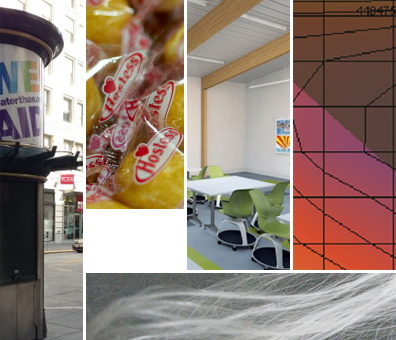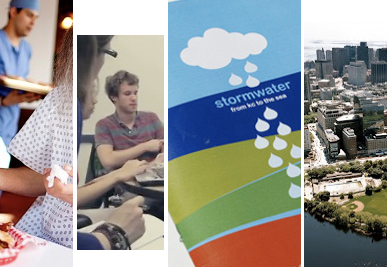HOK kiosks. Bug tech at Cannon. HMC and the next Frog. P+W's tech lab. Twinkie returns.

New kiosks. HOK is introducing two new kiosks as part of its re:NEWS project near San Francisco’s Union Square.
While previous reuse ideas have included a bike repair kiosk and printmaking, the new kiosks will be a pop-up museum housing a collection of puppets from around the world. This project is a partnership effort with Community Arts International, the Union Square Business Improvement District, HOK and JCDecaux.
Via HOK Life
Bug technology. Jack Mevorah of Cannon Design explores the idea of replicating a spider web, which has been unveiled by Japan-based Spiber.
The company has created a kind of synthetic spider-web material it calls Qmonos, named after the Japanese word for spider web (kumonosu). Spiber says the artificial spider thread it has produced is equal to steel in tensile strength yet is flexible as rubber.
An efficient way to build. HMC Architects and Project Frog, a component building company, have teamed up to deliver “Impact,” Project Frog’s next generation building platform specifically designed around the needs of 21st century learning.
The new building platform, called Impact, answers the call of students and teachers across the nation for healthier, inspirational buildings, while addressing the needs of administrators for speed, durability and affordability.
A tech lab. Bruce Toman and Bill Schmalz of Perkins + Will, discuss the firm’s research center dedicated to investigating new technologies that contribute to high-performance buildings, finding applications for those technologies in the firm’s designs and contributing to the knowledge base of the architectural profession.
The Perkins+Will Building Technology Laboratory uses computers to generate virtual scenarios and to test innovative ideas. “Tech Lab’s research can strongly influence the designs of our projects, resulting in buildings that are energy-efficient and technically advanced, while also providing their occupants with pleasant environments to work or live in.” -- Bruce Toman and Bill Schmalz
Innovative Social Media
Twinkies return. Twinkies make the “sweetest comeback in the history of ever” with the launch of a multi-platform campaign strategy to engage its users with media. Social media channels such as Twitter, Facebook, Instagram and Vine form the core pillars of that strategy.” The microsite, Feed Your Cakeface, has been populated with Instagram images and Vines showing the first bite of the snacks.
There is a giant Twinkie in Times Square, a cupcake in Los Angeles. And Twinkies teams are handing out buttons and a Twinkies food truck tour is planned to tour the country and give out cakes.
Via ZDNet and Feed Your Cake Face


